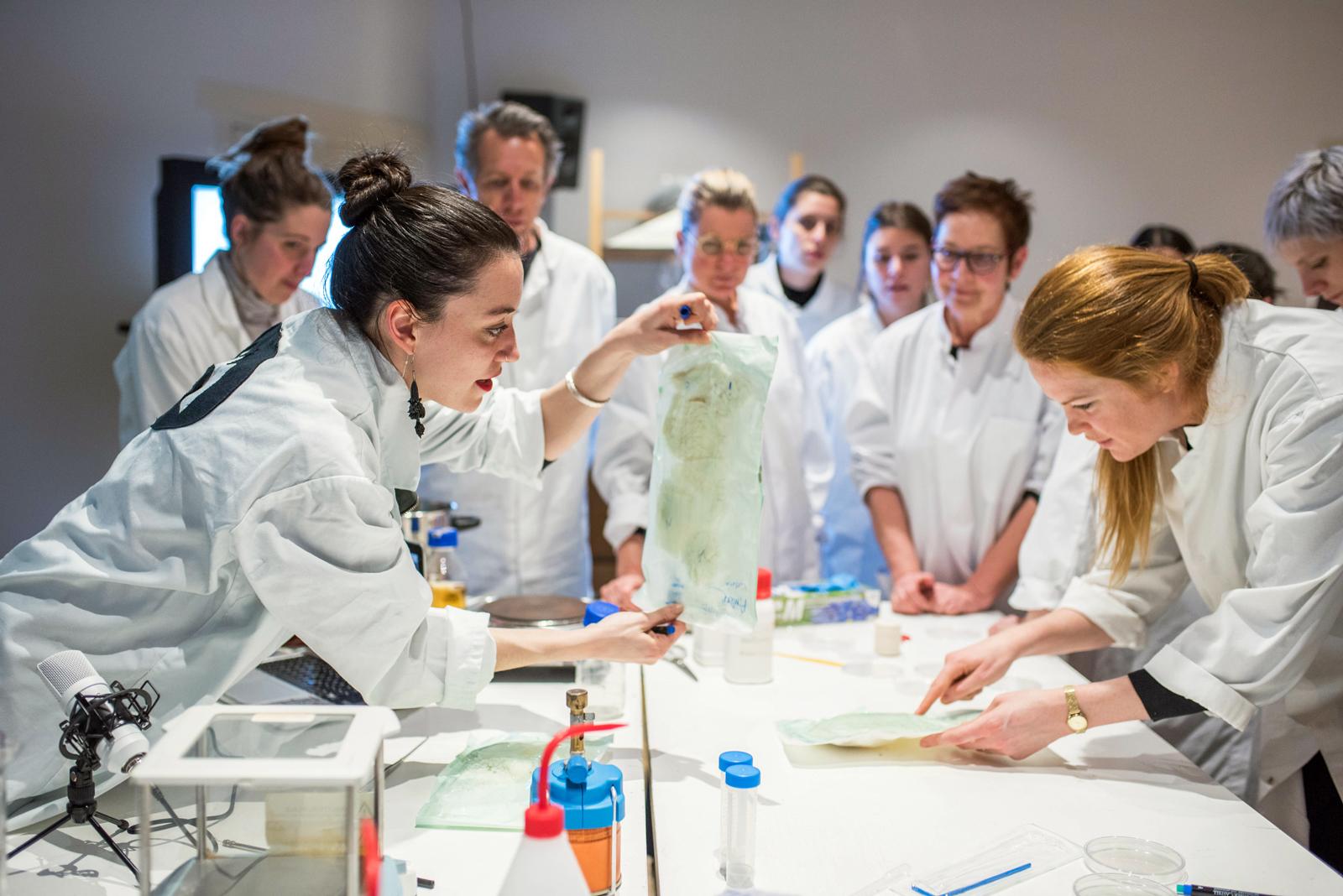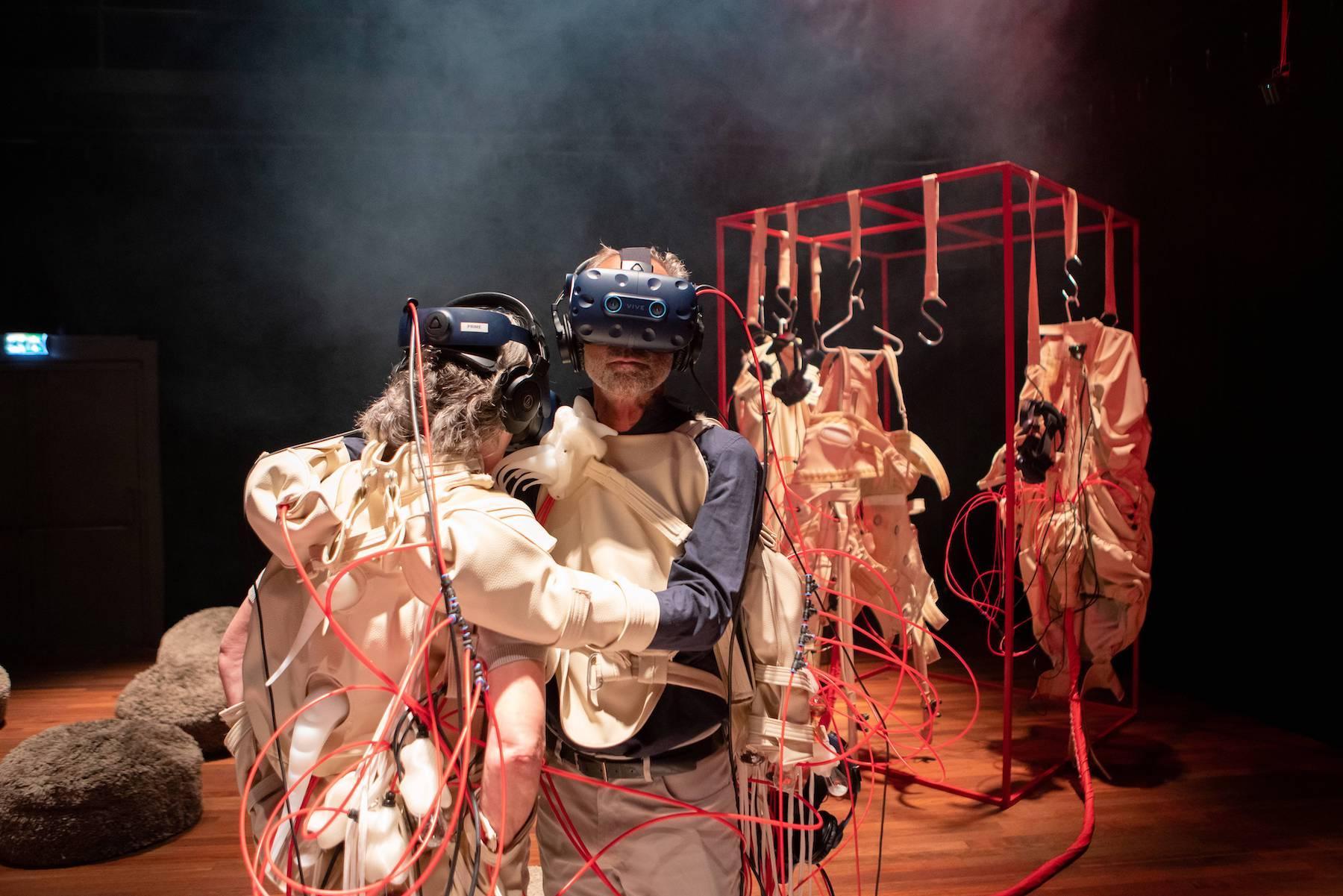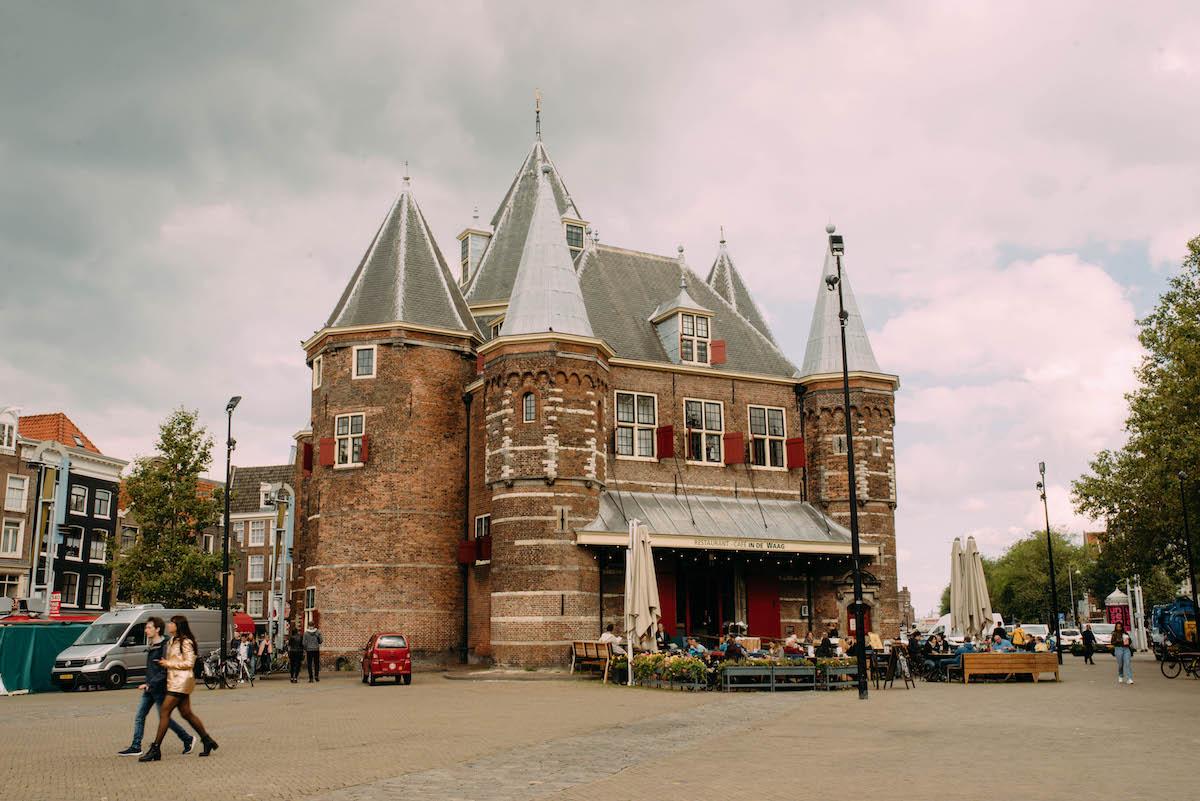When I started at Waag a few weeks ago, things at first felt a bit overwhelming. With four research groups and many different projects, there is a lot going on at Waag. During Thursday night’s public programme the projects are on display and turned into workshops, talks and other events. Over the coming weeks I will be attending these open Thursdays. Discovering Waag – one event at a time.
Thursday March 29th marks the start of this journey through Waag. The first stop? A workshop on the extraction of colours from bacteria, organised as part of the TextileLab Amsterdam. Perhaps quite fitting to start off small, with tiny bacteria and microorganisms. On this evening, about 20 participants get to work on creating dyes from bacteria.
While the workshop is aimed at letting people explore the possibilities of these bacteria in a fun way, the implications of these techniques go much further. If successful, the production of bacteria-based dyes can provide a promising alternative to the chemicals and dyes currently used in the textile industry.
Making as starting point
'Making'’ is a theme that keeps popping up at Waag and is part of the core philosophy. This maker mindset is at the heart of this workshop. After a short introduction on the theme of the workshop, some background on the textile industry and the types of bacteria that will be used, it is straight to work. Drinks away, gloves on, and ready to start!
Petri dishes containing the bacteria are taken out of the incubator and reveal a deep and rich purple colour. But even though they look great, the smell escaping from the incubator quickly reminds me that it is in fact bacteria we are dealing with. The particular type of bacteria used for this workshop is one that can normally be found on the backs of frogs, with whom the bacteria have a mutually beneficial relationship.
Not tonight though. The bacteria have been harvested and grown for a few days, ready to be turned into dyes. Pouring pure alcohol onto the petri dishes, the bacteria are killed while the liquid turns them into a dye.
Natural dyes like turmeric with the most amazingly vibrant colours are also available to be mixed in with the bacteria dye. This leads to active experimentation, trying to create the most beautiful or interesting colours. As the workshop progresses, some people start on a quest to produce a blue dye, apparently the most difficult colour to make. Perhaps the most interesting dyes are the pH-reacting ones. With just one drop of sodium carbonate, colours change rapidly from red to green, slightly reminiscent of those high school chemistry pH experiments.
At the end of the night, people can take home any sheets of paper or textile decorated with their personally created dyes, as well as some of the leftover dishes. Inspired by the workshop and ready for more experimentation.
For this simplified workshop within our Thursday evening programme, results from an earlier more extensive workshop were used to shorten the necessary preparation time.


